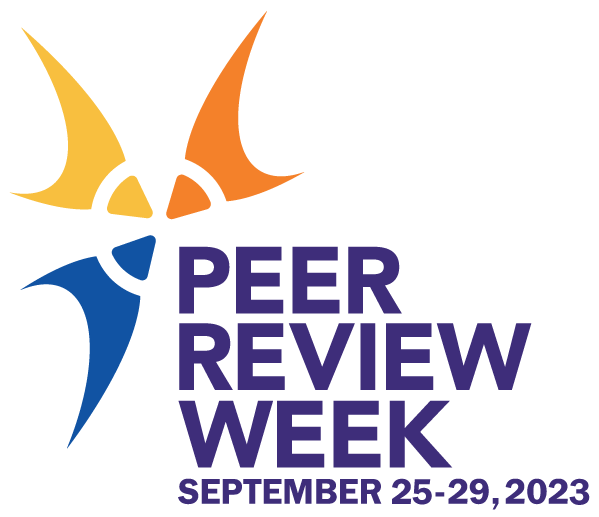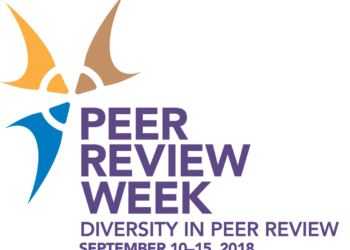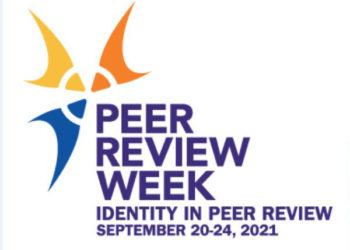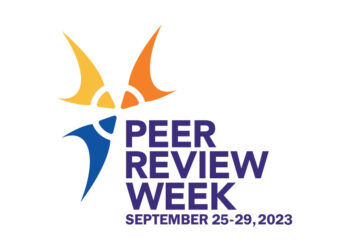Continuing our series of posts in celebration of this year’s Peer Review Week, today we are delighted to share this interview with Sue Harris (Managing Editor, American Psychologist, American Psychological Association and current Society for Scholarly Publishing Diversity, Equity, Inclusion, and Accessibility Subcommittee Outreach Lead) and Shaina Lange (Managing Editor, Kidney News, American Society of Nephrology and Society for Scholarly Publishing Diversity, Equity, Inclusion, and Accessibility Committee Co-Chair). They and their fellow members of the Society for Scholarly Publishing (SSP) Diversity, Equity, Inclusion, and Accessibility (DEIA) Committee Outreach Subcommittee have been working on a toolkit to help journal editors and publishers improve diversity, equity, inclusion, and accessibility in editorial roles and peer review processes. This important topic was the focus of Peer Review Week 2018 and also fits well into this year’s theme of peer review and the future of publishing, since it’s impossible to imagine that scholarly communications can or will continue to thrive without tackling DEIA in all its forms. Building Diversity, Equity, Inclusion, and Accessibility in Editorial Roles and Peer Review: A Focused Toolkit for Journal Editors and Publishers will be published later this year (disclosure — I was one of the reviewers), and we’re very grateful to Shaina, Sue, and their colleagues for their hard work in developing these guidelines, and for sharing this sneak preview with us in time for Peer Review Week 2023.

Please can you give us some background on Building Diversity, Equity, Inclusion, and Accessibility in Editorial Roles and Peer Review: A Focused Toolkit for Journal Editors and Publishers – how did it come about, and who has been involved?
In 2021, SSP’s Diversity, Equity, Inclusion, and Accessibility (DEIA) Committee became aware of a strong desire among many publishers and editors to implement more equitable and inclusive practices, in part based on the enthusiastic response to C4DISC’s Toolkits for Equity (the first of which was released in late 2020). Also around this time, members of the DEIA Committee’s Outreach Subcommittee, led at the time by Chhavi Chauhan, observed the pandemic having an inordinate impact on women and other family caregivers in their professional paths, who were abruptly faced with increased caregiving needs. In some cases, this led to retrogression of the forward movement toward greater inclusivity in editorial roles, important to career advancement.
As a committee of dedicated publishing professionals, we recognized the efforts of many publishers and editors — both collectively and individually — to move from words to action. Developing this Toolkit aligned with the mission of the DEIA Outreach Subcommittee to offer resources to the wider scholarly publishing community and thus this project was born.
Initially planned as a Mini-Toolkit, we were gratified to find an array of ideas and practices implemented in the publishing industry over the past several years. So our project quickly grew in scope. We therefore felt that “Focused Toolkit” was a more appropriate moniker — while the Toolkit remains focused on building representation among peer reviewers and fostering equity in the actions of peer reviewers, it is also dedicated to building equity, diversity, and inclusion into core aspects of the wider editorial endeavor.
The Toolkit development has been led by the Outreach Subcommittee with significant contributions from several members of the full Committee. We could not have put this together without the combined efforts of the project volunteers listed at the end of this post.
Why is this Toolkit needed?
Fitting with this year’s Peer Review Week theme, DEIA is critical to the future of publishing. Journal publishers and editors play a crucial role in determining what research is published and communicated, and how. They also increasingly share the aim of correcting historical and present imbalances to foster an equitable publishing environment. Editorial board members and peer reviewers are vital participants in this process. When these groups are representative of our broader community, we benefit from a plurality of perspectives and diversity of thought; we make the research ecosystem more equitable; and we counteract systemic and implicit biases to improve the integrity of the editorial and peer review processes.
Of course, it’s one thing to know all of that, but another to take actionable steps to get there. For many of us, it can be challenging to know where to start or what efforts will make the biggest impact. For those who are further along in their DEIA journeys, it can be challenging to know what’s next. The Toolkit serves as a starting point—a set of strategic recommendations and tactics to reference while determining how best to set and advance your goals.
Who do you hope will use it?
The Toolkit is meant for journal publishing professionals and editors. Whether you are in a DEIA-focused role or looking to advance DEIA-related goals within or beyond the scope of your role, the Toolkit tries to meet you where you, or your organization, are in your DEIA journey. We anticipate that some of the strategies can be applied to other publishing sectors as well, although much of the content is specific to journal publishing.
What do you see as the Toolkit’s most important recommendations for each of those groups?
The Toolkit covers five major areas:
- Developing an inclusive culture and mission. We believe this is foundational to creating a psychologically safe space and generating other positive actions. From commitment statements from leadership to formal policies around open science and data-sharing, there are numerous ways that organizations and publications can cultivate an inclusive culture in alignment with their mission.
- Collecting and reporting demographic data of those involved in the editorial process. To systematically improve a situation, we must first take account of where we are today. Assessing the current breadth of diversity of your editorial board and reviewer pool provides information that can guide actions to increase diversity.
- Recruiting broadly and intentionally for both editorial roles and reviewers. Because of historical and ongoing inequities, we often must take additional steps to actively reach out to and welcome groups who have traditionally been excluded. Through broad and intentional outreach, you can take concerted actions to increase the participation of persistently marginalized communities in the editorial process.
- Creating pathways for reviewer participation. Mentorship and training are vital to developing an equitable and sustainable peer review ecosystem. Training sessions, journal co-reviewer options, and editorial fellowships create opportunities for individuals to gain experience and skills in this core scholarship activity.
- Improving equity in the peer review process. As with other human endeavors, implicit and explicit bias can influence the peer review process; we hope the tools offered here can help counteract those biases. Resources (such as bias-free language guidelines) and equitable processes (such as open peer review) will help ensure fairer peer review.
We don’t profess to say which actions are most important, as this may vary by organization; however, we find that collecting, reporting, and analyzing demographic data serves as a process of self-reflection for publishers and editors, while also communicating the value of diversity and inclusivity and enabling measurable goal-setting. It can point you to areas of underrepresentation and help determine where further action is needed.
Gathering demographic data is also an area where we recognize that tools could be especially useful, given the challenges of measuring intangible aspects of people’s intersectional identities in a respectful way — especially as language continues to evolve. There are many ways to go about demographic collection; considerations include collection methods, survey questions, and privacy (to name a few), and our Toolkit includes links to fantastic resources and standards from groups such as the Joint commitment for action on inclusion and diversity in publishing. We encourage groups to start small and deliberately. For example, targeting the highest impact stakeholder group(s) first would allow you to obtain some data while making adjustments before tackling a larger stakeholder group, like authors.
Are there any quick wins — things that any editor/journal/publisher could and should do right away?
While DEIA by nature requires ongoing attention, the Toolkit strives to make these efforts less daunting by outlining actionable steps and collating existing resources for additional reading. Our approach, as noted with the demographic data collection, is to start where you can. With that in mind, many of our recommendations are aligned with routine operational activities for publishers and editors, but encourage a reframing of those activities to prioritize DEIA and ensure equity for persistently marginalized communities.
That said, there are some very straightforward and impactful actions that editors and publishers can take. Developing a diversity statement for your journal will set an important inclusive tone. Appointing a diverse committee to conduct recruitment and selection activities for open editorial positions reduces the potential for bias and facilitates a fair evaluation process. Specialized language programs will help you review role descriptions, flag biased language that may deter candidates from applying, and suggest more neutral replacements. Position descriptions can be written to actively welcome individuals from marginalized groups, and posted and shared widely through listservs to reach marginalized communities. For example, The PhD Project helps to build a diverse pipeline of business school faculty through mentorship and training; and Editors of Color maintains a list of field-specific diverse databases across disciplines.
Are there major barriers to implementing any of the recommendations and, if so, how might they be addressed?
There will inevitably be barriers to advancing DEIA goals. We don’t want to imply that any of these recommendations are without hurdles, and some recommendations are larger in scale than others. Every organization and publication has different priorities, resources, systems, and leadership support, and these will present different challenges and opportunities. All of the recommendations require staff or editor time (at the very least), and these can be difficult to balance with other pressing priorities. However, the Toolkit emphasizes the importance of embedding DEIA into your strategic planning and directives, while helping to reduce the time involved in the initial planning and research stages. We also believe that these actions are generative — each step taken, despite hurdles, can change the culture of a journal or a whole organization in ways that promote further inclusivity and greater equity.
Looking to the future, have you thought about how you’ll assess the Toolkit’s success, how you’ll keep it updated, and so on?
Great question! Right now we are focused on finalizing the Toolkit’s content and making it available to the community as soon as we can. Through a partnership with C4DISC, the Toolkit will be hosted on PubPub and free to access. Like the Toolkits for Equity, we hope to monitor usage and anecdotal impact, with the potential to update as new topics arise or knowledge evolves. We recognize that the Toolkit is being developed based on current knowledge and our shared experiences, and we intend for it to complement existing and future resources. At the same time, we are a group of volunteers, so we want to be realistic about the commitment involved in maintenance. Once published, we would love to hear readers’ feedback to help us determine the desire for future updates and exploration of other topics.
Written by SSP DEIA Committee Project Volunteers: [in alphabetical order]
- Susan J. Harris (Project Co-Lead)
- Shaina Lange (Project Co-Lead and DEIA Committee Co-Chair)
- Allison Leung (DEIA Committee Co-Chair)
- Chenyue Jiao
- Megan McCarty
- Lillian Wang Selonick
With valuable contributions from:
- Robin Baldwin
- Todd Baldwin
- Patty Baskin
- Chhavi Chauhan
- Alice Meadows
- Damita Snow
Discussion
2 Thoughts on "Embedding DEIA in Peer Review Processes: An Interview with SSP’s DEIA Outreach Subcommittee about their Upcoming Toolkit"
When will the toolkit be published?
We hope to publish it by the end of the year. Please stay tuned into the SSP and C4DISC channels for a release announcement in the coming months.


